Larsen’s Opening: Complete 1.b3 Guide for Chess Players
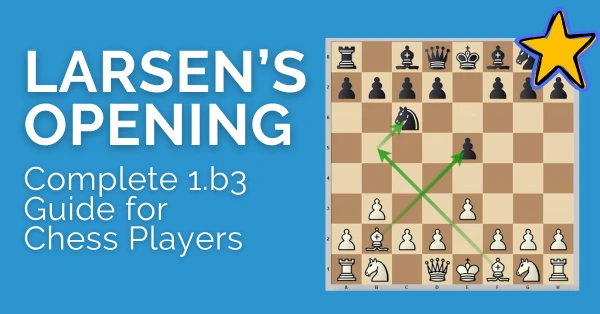
In Larsen’s opening (1.b3), White aims to steer the game away from the tried and tested paths with an immediate Queenside fianchetto.
This line is deservedly named after the great Danish player GM Jørgen Bent Larsen.
He successfully used this opening in the 1960s-70s.
White employs the hypermodern opening strategy in Larsen’s opening. The idea is to encourage Black to occupy the center and then attack it later with pawns and pieces.
One of the biggest advantages of this opening is that White enjoys great flexibility in choosing where to put his pawns and minor pieces. This makes it an attractive option for many players to value flexibility rather than staking an immediate claim in the center.

Contrary to the widely studied e4 or d4 openings, the Larsen opening often flies under the radar. This leads many chess players to underestimate its potential. Therefore, your opponents are less likely to be fully prepared against it. If you invest time to thoroughly understand the strategies and plans in this opening then it can give you an edge.
The Classical Variation 1…d5
1.b3 d5
2.Bb2 c5
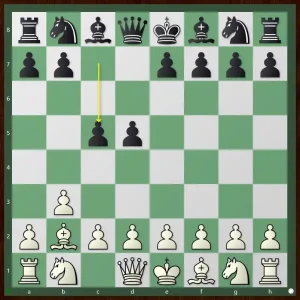
With the move, c7-c5 Black establishes a strong foothold in the center. 2..Nf6 is also possible which will either transpose into this line or lead to completely different structures (if White decides to play Bxf6)
Here Black can also play Creative 2..Bg4!?
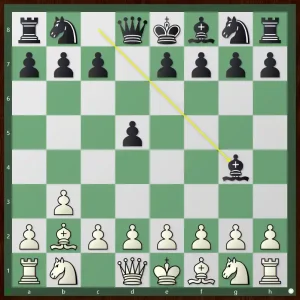
The objective is to stop e2-e3 and double the f pawns after Nf3. White can push the Bishop away with h3 and g4 but Black argues that this is more damaging than useful for White. Given this, White can just continue with g3 and finish his development.
3.e3
If White continues with natural looking move 3.Nf3?! then Black can take over the center with 3..f6.
After 3.e3 Black has the option to choose whether to play the b8 or g8 knight. Often, they transpose but sometimes they can lead to different structures.
Note: Transpositions are common in this opening. So, it is a good idea to be aware of all the tricky move orders. If you want to learn more about this then you can check out this course.
3..Nc6 4.Bb5
In these positions, White will play Bb5 and then trade on c6 if given the opportunity. The strategy here is to fight for the e5 square. White can then continue with f4, Nf3, 0-0 and Qf3. This gives White a comfortable position in the center and future attacking prospects.
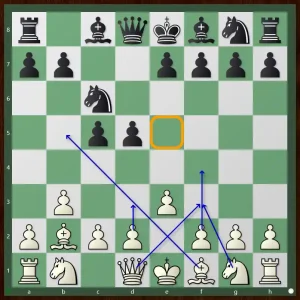
To get an idea of how White might play in this position, take a look at the following Model game.
White opens with 1.Nf3 but soon transposes to our standard position.
Andrei Kharlov vs Alexander Raetsky, St Petersburg 1999
What if Black waits with 3..Nf6? Then we continue our development until Black plays Nc6. If Black insists on not playing Nc6 then White can just exchange off the light-squared Bishops.
Black can also opt for a Kingside fianchetto structure hoping to steer the game into KID structures. You might encounter this a lot as many players use the KID structure against 1.Nf3/c4 and other openings.
An interesting strategy is to go for opposite side castling. The idea is logical; we have already developed our c1 Bishop so it is faster for us to castle Queenside than Kingside.
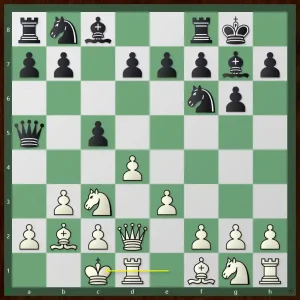
The following game shows some of the creative ideas that White can use.
Game 1: Baadur Jobava vs Shakhriyar Mamedyarov, Tbilisi 2015
Game 2: Baadur Jobava vs A Goganov, 2015
The Modern Variation 1…e5
1.b3 e5
2.Bb2
Now Black has to defend the pawn. That means Black has slightly fewer options than d5.
The most popular move in this position is to play 2..Nc6. This is generally considered to be the main line. This move offers flexibility to Black because he has the option to push the d-pawn two squares.
White can now play the position according to his tastes. White can play 3.e3 to open the diagonal for the bishop.
We saw this in 1..d5 lines as well. One of the main ideas in this opening is to play e3 to open up our light-squared bishop so we can play Bb5 and put pressure on Black’s center. This is in line with the Hypermodern opening strategy; you use your pieces rather than pawns to influence and pressure the center.
3.c4 is another good option to stake a claim in the center immediately.
3..Nf6 4.Bb5
Now the best way to defend the pawn is to play 4..Bd6 it looks illogical to block the c8 Bishop but this is the most popular move by far. 4..d6 doesn’t give Black much as it leads to a solid position.
5.Na3
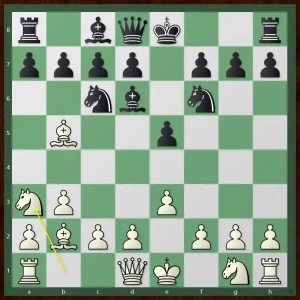
The idea is to move the knight to c4 and exert pressure on the e5 pawn.
5..a6
Now White can play 6.Bxc6 or retreat with 6.Be2, preserving the Bishop pair.
After 6. Bxc6 dxc6 7.Nc4 Qe7 White can play the position in a variety of ways.
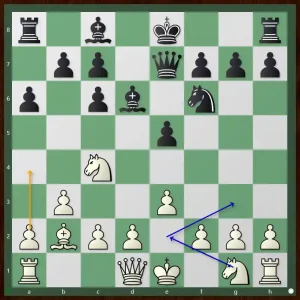
Playing 8.Ne2 with the idea to go to g3. Another interesting idea is to play 8.a4. White discourages Black from vacating the Knight.
6.Be2
White preserves the Bishop pair
6..b5 Black stops Nc4
7.c4 b4 8.Nc2 0-0 9.d4 exd4 10.exd4
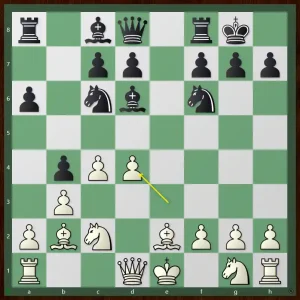
We have a strategically rich position with chances for both sides.
Move order: 1.b3 or 1.Nf3/2.b3
Both options have their pros and cons. Each line aims to discourage your opponent from playing a specific line.
With 1. Nf3, 1..e5 is not possible. Also, by playing Nf3, you don’t commit your central pawns too quickly. White can transpose to standard d4 lines or in some cases even e4 lines. This confers a great deal of flexibility to White who can look to move order his opponent into a better opening.
But 1.Nf3 allows Black to play the Kingside fianchetto with 1.g6
In the case of b3, Black cannot go for an untouched Kingside fianchetto structure as White has the option to damage the Kingside pawn structure with Bxf6. But b3 doesn’t influence the center at all so Black has the freedom to decide the arrangement of the central pawns.
Another factor is that with 1.b3 White will play the bishop to b2 otherwise it would be just a weakening move in the opening.
It’s up to you to decide which way you want to go for the opening after weighing in the pros and the cons.
Summary
The Larsen opening with 1.b3 is a great opening choice for players of all levels. Grandmasters have played this opening in the past and continue to play it. This speaks volumes about the validity of the opening in the age of computer engines. Players who enjoy strategic freedom and tactical play in the opening rather than playing a dozen moves of theory will enjoy this opening.
Frequently Asked Questions
Is the Nimzo-Larsen Attack good for beginners?
Yes, the Nimzo Larsen is an easy opening to learn and play. As the opening moves are standard White has the freedom to choose how he attacks the center.
Is Nimzowitsch-Larsen Attack the same as Larsen’s Opening?
Yes. Both names are used interchangeably to represent the same opening (1.b3)
What is the Larsen opening strategy?
In the Larsen opening, White uses the Hypermodern opening strategy. The idea is to use pieces rather than pawns to influence and pressure the center. Then at a later stage, White will strike at the center with pawn thrusts.
Do GMs play 1.b3?
Yes, many prominent Grandmasters have played the Larsen opening. Some of them are Larsen, Bagirov, Nakamura, Rapport,and Jobava.
https://thechessworld.com/store/product/larsens-opening-lemos-formula-with-gm-damian-lemos/




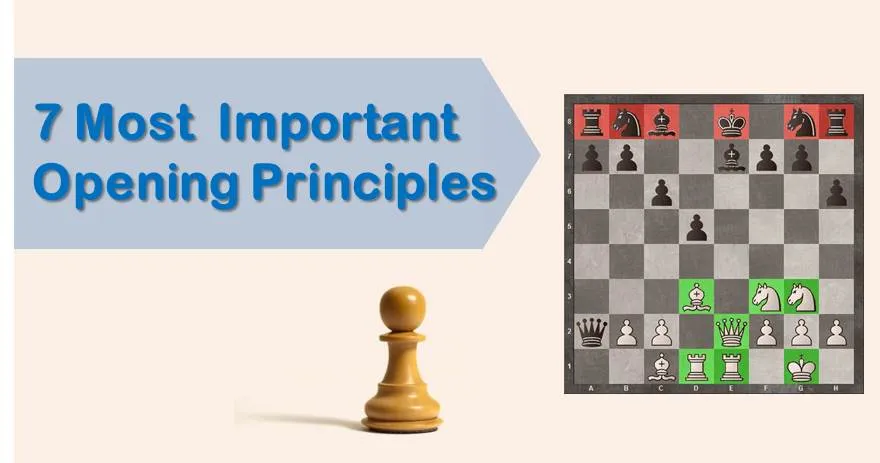
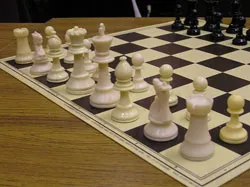




Comments: